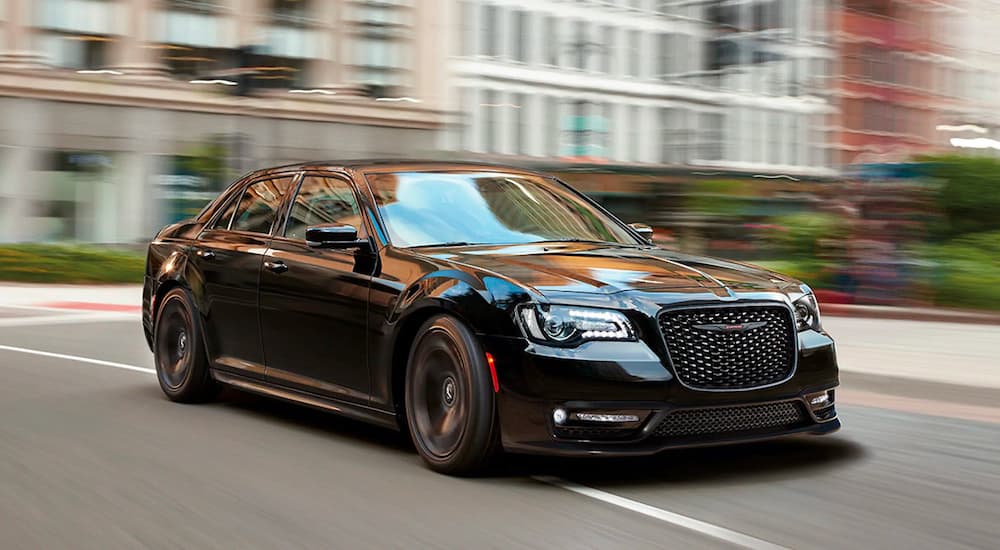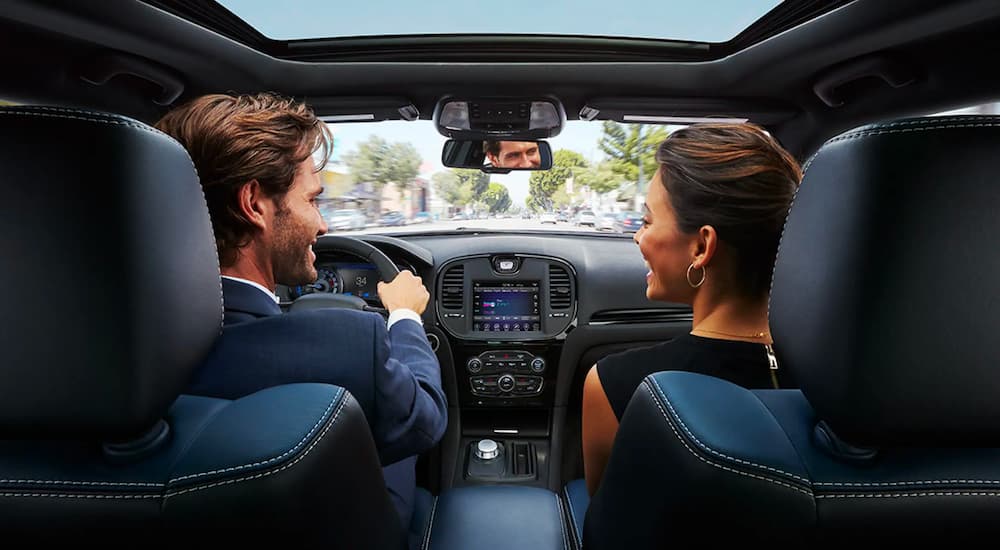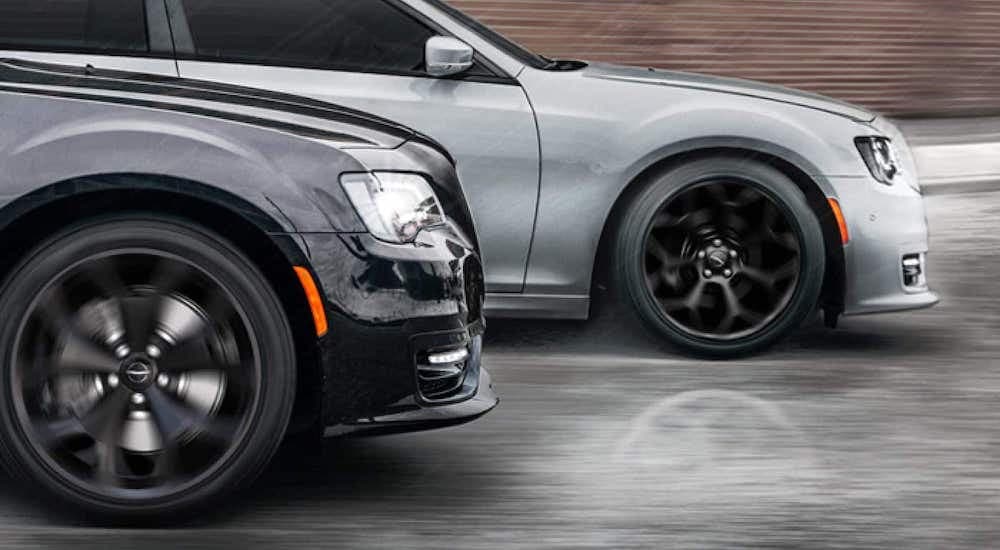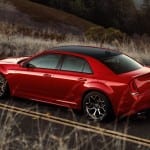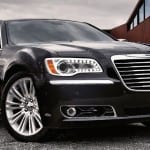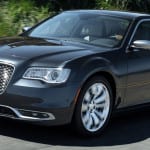Have you visited a Chrysler dealership lately? If so, you’ve probably noticed that it’s slim pickings for the automaker with only four models offered – the Pacifica, Pacifica Hybrid, 300, and Voyager. SUVs are noticeably absent from the lineup, which is surprising considering that SUV sales made up almost 50% of auto sales in America. So, what’s keeping Chrysler afloat?
Chrysler doesn’t need an SUV to maintain its footing in the industry thanks to the luxurious Chrysler 300 sedan, a modern-day underdog that was once the most powerful car in America. With its popularity ebbing and flowing over the years, Chrysler fully redesigned the 300 in 2004 and attracted a younger generation of drivers looking for performance and luxury. Fast forward nearly two decades later, and the 300 is an underdog that’s often forgotten despite a mix of affordability and luxury that makes it a great value across the board.
The Rise and Fall of a Legend: 1955-1965
The 1950s saw a rise in consumerism that extended to the automotive industry, with over 7.9 million cars sold in the United States in 1955. Chrysler cashed in big in 1955 with the debut of the 300, a high-performance car named because of its ability to deliver 300 horsepower courtesy of its 5.4-liter HEMI Firepower V8 engine. At the time, the 1955 Corvette delivered 195 horsepower, making the 300 one of the most powerful cars on American roads. The muscle car was born.
Over the next decade, Chrysler produced the 300 letter series with the models continuing from 300 to 300B, 300C, etc., until the production run ended in 1965 with the 300L. The 300 sedans were some of the most luxurious and fastest cars on the road at the time, as Chrysler spent the entire decade upgrading the sedan to ensure drivers had the most power at their fingertips. This progression evolved from the 300-horsepower Chrysler 300 to subsequent models like the 1957 300C (375 horsepower), 1959 300E (380 horsepower), 1960 300F (400 horsepower), and 1962 300H (405 horsepower).
The Rebirth of the 300: 1999-2020
Despite the 300’s popularity in the late 1950s and early 1960s, the 300 letter series was phased out in 1965 after losing its prestige among buyers. The more affordable “non-letter series” remained in production until 1971 but never had the renown of its more capable predecessor. The 300 didn’t see the light of day again until three decades later when Chrysler reintroduced the sedan as the 300M in 1999. The 300M signified Chrysler’s plans to pick up exactly where the company left off in 1965, much to the delight of Chrysler loyalists who had high hopes for the new model.
The modern-day take on the classic 300 fell short of what many buyers were hoping for since the new model delivered less power than even the 1955 original, with a 3.5-liter V6 engine that only produced 253 horsepower. However, Chrysler made up for the difference by making its acceleration faster than early models, with a 0 to 60 mph run taking well under eight seconds. This capability and the demand from drivers for more power paved the way for an all-new Chrysler 300 in 2005. This time, Chrysler returned to its roots with the new 300 mimicking the letter series from its suite of performance and luxury features to its 340-horsepower HEMI V8 engine.
Chrysler upped the ante again in 2006 with the debut of the 300 SRT8 that produced 425 horsepower thanks to the 6.1-liter V8 engine under its hood. The SRT8 spent five years in production before taking a one-year hiatus only to return bigger and better than before in 2012 with a more powerful 470-horsepower engine. By 2015, however, the SRT8 was discontinued as Chrysler focused all its efforts on redesigning the 300 to attract drivers looking for a modern luxury sedan with advanced safety and technology features. To capture this market, the company added driver-assistance tools like blind-spot monitoring, an 8.4-inch touchscreen display, and a Garmin navigation system.
The Modern-Day Underdog: 2021 Chrysler 300
Although little has changed on the Chrysler 300 over the last few years, the luxury sedan is a contender, albeit an underappreciated underdog, in the class of luxury cars. Although it’s often overshadowed by competitors like Cadillac, the 300 is far more affordable and offers exceptional power and value to drivers looking for an affordable and capable sedan without sacrificing comfort, convenience, and luxury. The 300 meets those requirements and offers much more.
Affordability
The 2021 Chrysler 300 is both luxurious and affordable, with the Touring trim starting at $30,795. The Touring is equipped with a 3.6-liter Pentastar V6 engine that delivers 292 horsepower. Drivers can even opt for all-wheel-drive and reap the benefits of innovative technology like the ParkView Rear Back-Up Camera. Next in the lineup is the Touring L, which starts at $33,795 and adds luxurious features like heated leather-trimmed seats with lumbar adjustment as well as larger 18-inch aluminum wheels. The Touring L is also equipped with advanced safety tools like Front and Rear Park Assist, Blind Spot Monitoring, and Rear Cross Path Detection.
The top-tier Chrysler 300 is the 300S V8 that is still reasonably priced and a great value at $41,745. This trim outfits the 300 with a 363-horsepower HEMI V8 engine and a performance-tuned suspension that delivers exceptional handling in Sport Mode. The model also sits on larger, 20-inch black aluminum wheels with an interior fit for a king thanks to performance leather-trimmed seats. If you want the same performance features but don’t need V8 power, there is also a 300S V6 that comes in at $37,745.
Best-in-Class Tech
While technology wasn’t a concern on the 300 letter series of the 1950s, it’s a top-priority for Chrysler today, and that’s why the 2021 300 is outfitted with an exceptional suite of tech and safety features. Equipped with the largest standard touchscreen in its class at 8.4 inches, the 2021 300 gives drivers everything they need at their fingertips with the Uconnect 4C and available Uconnect 4C Nav software that offers integrated voice command and Bluetooth capability as well as Apple CarPlay and Android Auto integration. The system is also equipped with an available 4G LTE Wi-Fi hotspot that can support up to eight devices and ensures everyone in the 300 is connected wherever the road takes them.
The 300’s tech extends from connectivity to safety with a suite of advanced features like Full-Speed Forward Collision Warning with Active Braking and Adaptive Cruise Control with Stop and Go, the latter of which monitors the flow of traffic and adjusts the 300’s speed as needed. Drivers have even more confidence when they get behind the wheel of the 300 thanks to tools like LaneSense Lane Departure Warning with Lane Keep Assist, Blind Spot Monitoring, ParkSense, and Rear Cross Path Detection. These features are designed to enhance visibility around the 300 and minimize the potential for collisions.
Reviving a Classic
Underdogs often perform better when the odds are against them, and that’s why so many have high hopes for the Chrysler 300. With a rich history as the most powerful car in America in the 1950s, the 300 may have fallen from grace in the late 20th century, but it continues to prove that it’s a viable contender in the luxury sedan market. Not only is it affordable, but it’s also powerful and packed with luxury, convenience, safety, and performance features that make it one of the best, albeit often forgotten, luxury sedans on the road today.
